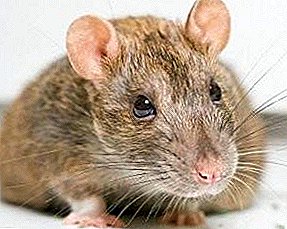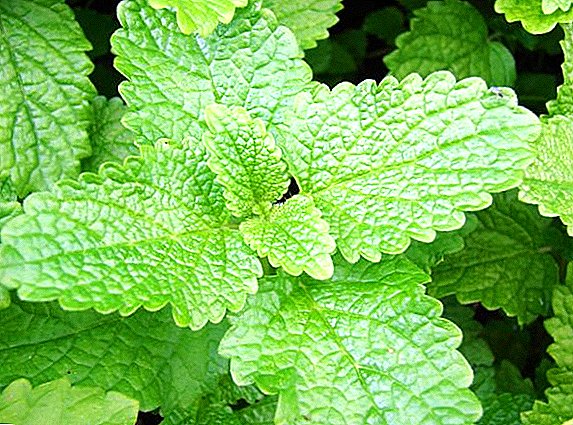
Gray rat (Pasyuk) - the most common, unpleasant pest among rodents. Every year, their colonies cause damage to agriculture, tree and berry forest plantations.
Often they are carriers of serious diseasestherefore pose a risk to human health and pets.
In order for rodents not to bring trouble to gardeners, it is important to be able to properly fight and protect the backyard territory and the house from uninvited guests.
Characteristics, the appearance of a gray rat and photos
Pasyuk is a gray rat, barn, common - the animal of the rodent squad of the mammalian genus. In nature considered the largest ratliving in Russia.
Pasyuk little body elongated, 20-27 cm in length and weighing 150-400 grams. The tail is average, about 19-20 cm. The paws are pink, skeletal, clawed.
The muzzle of a gray rat is wide, the mustache is light. Ears are pinkish, pointed.The fur color is grayish and closer to agouti. The belly is whitish.
The border between the color of the belly and barrels is clearly visible. Young individuals of gray color, with age a redhead appears in it. In nature sometimes black common rats.
The hairs of different lengths, rather tough, stand out hairs - longer and shiny.
Further on the photo you can clearly see the Pasyk rat:





Origin of species of pasyuk
Scientists suggest that the birthplace of a barn rat is eastern territories of China. To Europe they hit through the maritime communication between countries on merchant ships.
The scientific name Rattus norvegicus (Norwegian rat) was acquired by an English biologist John Berkenhout in 1769, who rashly suggested that rodents came to Dania from Norway on industrial vessels, although at that time they were not there yet.
Distribution and reproduction
Gray rats are found in various parts of the world. They managed to achieve wide distribution thanks to passive movement on merchant ships.
They can live anywhere where there is access to water, food, as well as favorable climatic conditions for survival. Barn rats differ in high fecundity.
 Puberty occurs by three months. Up to eight litters can be born per year. 7-10 individuals.
Puberty occurs by three months. Up to eight litters can be born per year. 7-10 individuals.
Can you imagine how many individuals appear per year on the entire planet? Pasyuk is one of the most prolific rodents on the planet.
Lifestyle
Common rats lead a twilight lifestyle. Active from 7 pm to 8 amThe maximum peak falls at 20-22 hours.
They can get out of their shelters during the daytime, if there is a need. Live in groups or colonies, aggressively guarding their territory from strangers.
Members of the pack recognizes the smell. In nature for them serve as shelters: burrows, stumps, snags, ruined nests. In the city they often live in garbage dumps, dumps, basements, sewers.
Eat plant food, fish and meat, grain, any food garbage.
Harm to a man-farmer
In the household, a common rat causes a good deal of harm.
- In the barns, they eat and drag crops of grain, beans, and beans. They spoil storage tanks (bags, boxes, boxes). Gnaw vegetables and fruits.
- In the suburban area, rodents prefer to feast on vegetables, berries, fruits, plant roots and garden flowers.
- Pasyuks gnaw through the walls of buildings, barns, spoil furniture and wires. Gaps are not only reflected in the appearance of a dwelling house, but can also cause short circuits and fires.
- Rats are not only dangerous for human health. Cases of rodent attacks on pets are not rare.
Methods of rodent control
 Consider the most effective ways to protect homes and land.
Consider the most effective ways to protect homes and land.
Toxic substances
In specialty stores there are many varieties of poisons.
All poisons can be divided into strong and weak actions.
- The first category includes zinc phosphide. Poison acts fast. Once in the stomach, it begins to react with hydrochloric acid and forms phosphorous hydrogen, which stops breathing.
For the death of an animal suitable 3% concentration of poison. Good for not poisoning other animals if they eat a poisoned rat. - Long acting substances more suitable for dealing with small rodents. It may take a little time until the poison accumulates in the body and destroy the animal. In addition, the body of a gray rat is more resistant to poison and can get used to it, so from time to time the appearance of the substance will have to be changed.
In which species can poison be used?
- Poison-soaked delicacies (grain, cheese, bread, pieces of meat). The method is effective and the most common.
- Liquid bait - dissolved chemicals in water, milk.
- Powder chemicals - for pollination of outlets of burrows and other places where granary rats could be seen.
- Gaseous chemicals - used, for example, for irrigation of holes. This method should be applied with caution, especially in residential areas.
Mechanical traps
 Arrangement mousek - the easiest way, but not reliable. A barn rat is larger than a vole in size, so the standard simple mousetrap is not suitable for it.
Arrangement mousek - the easiest way, but not reliable. A barn rat is larger than a vole in size, so the standard simple mousetrap is not suitable for it.
In addition, after catching 1-2 rodents, they do not want to go into a mousetrap even for the most exquisite bait.
Ultrasonic Repeller
Enough effective method. Modern devices operate effectively. Ultrasonic waves adversely affect the psyche of rodents and force them to leave the occupied territories.
Overlapping paths
Another not a bad way to fight. To get rid of gray rats in the house or shed, you can use overlapping paths.
Try to calculate the moves, loopholes, paths along which the pasyk sneaks into the house, and sprinkle around them calcium chloride. Rodents do not tolerate this powder.
Rat loopholes and Strokes can be plastered with cement with crushed glass. It will be extremely difficult for them to gnaw such a wall.
In the fight against the hated gray rodents all ways are good.
For the work to be done effectively, it is better not to dwell on any particular method, but try to change them or use them in combination.
Then even such unpleasant pests as gray rats will not be scary to your home and site.












